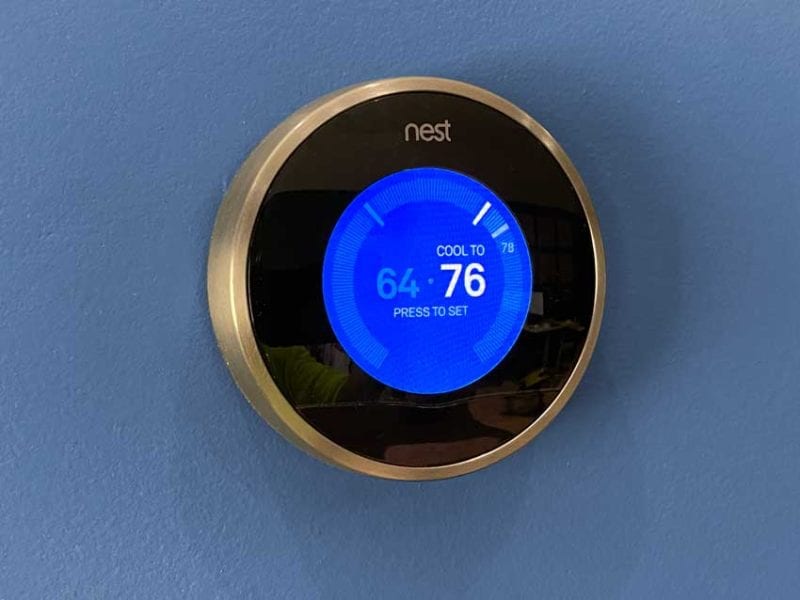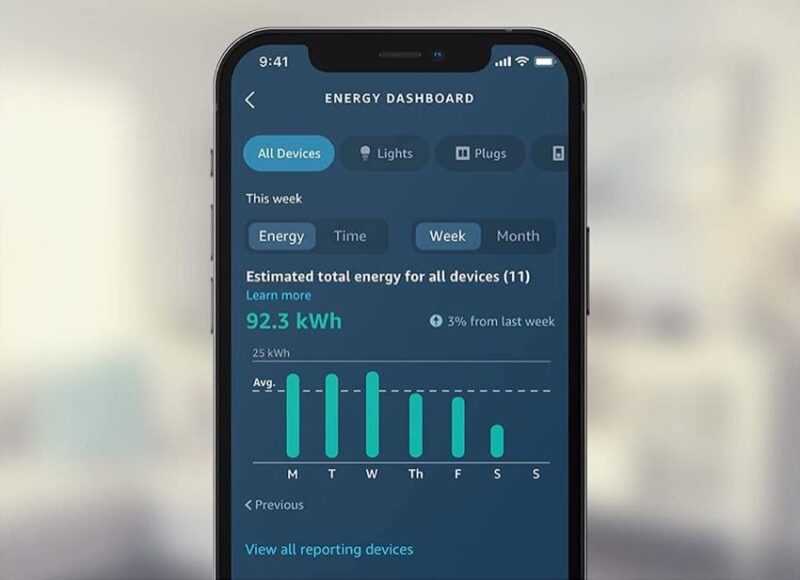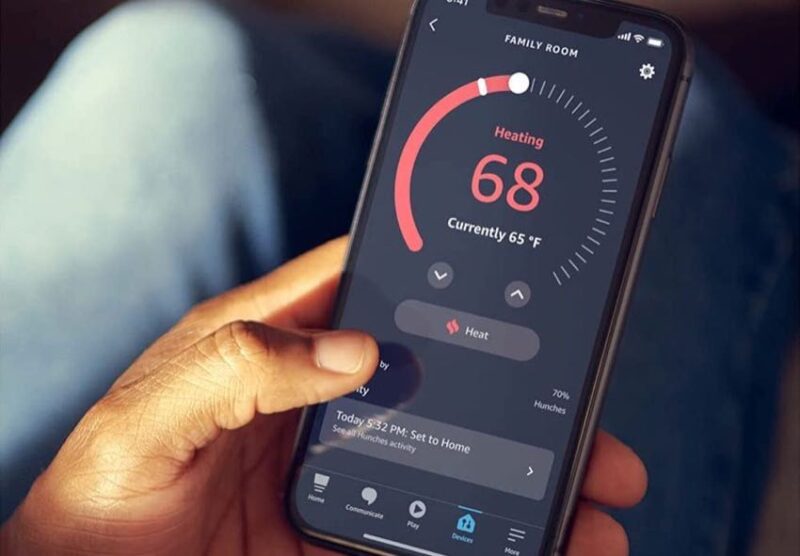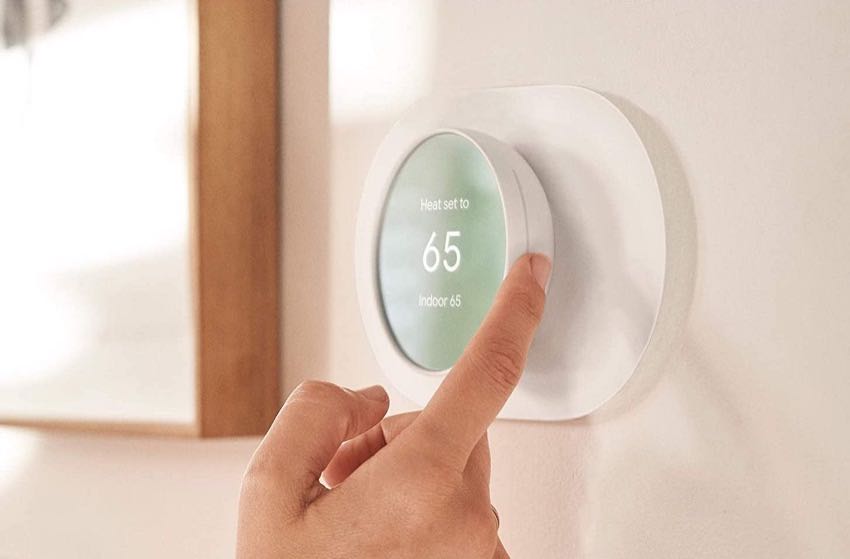A smart thermostat is a type of device that leverages technology and sensors to control the heating and cooling of a home. Unlike a traditional thermostat, you can control a smart thermostat using a smartphone or tablet in addition to the unit itself. You can also, however, program it and use integrated sensors and schedules to optimize when and how it heats and cools your home or office. Incremental adjustments and efficiency improvements over time can save both energy and money. Are smart thermostats worth the money, however? Well, that depends on how you use them and what your goals are. Hopefully, we can help you decide.
Table of Contents
How Smart Thermostats Work
Before we get to the questions you need to ask, let’s quickly discuss how smart thermostats work. Smart thermostats like the Nest thermostats learn your heating and cooling preferences over time. They can automatically adjust the temperature to your liking. Of course, like a programmable thermostat, you can also simply program a schedule for them to follow.
While most thermostats are typically installed by a professional, more and more come equipped with everything a homeowner needs to get up and running. During installation, the thermostat connects to your home’s Wi-Fi network which lets you adjust the settings using a smartphone app. Many smart thermostats also support Amazon Alexa, Apple’s Home app, and/or Google Home. That also makes voice control possible.

In general, smart thermostats work by sensing the temperature in your home and comparing it to the temperature you have set. If the temperature in your home is higher or lower than the set temperature, the thermostat will turn on your heating or cooling system to adjust the temperature accordingly. Some smart thermostats include built-in sensors or geofencing. These can detect when you are away from home and automatically adjust the temperature to further save you money.
1. Do You Need a Smart Thermostat or a Programmable Thermostat?
A programmable thermostat lets you set specific temperature schedules for different times of the day. Some systems allow for full 7-day/24-hour schedules to customize your temperature for the entire week. This works great for predetermining the times when you’re asleep or away from home. A good schedule can certainly save both energy and money.
A smart thermostat, on the other hand, differs in that it can automatically adjust the temperature in your home based on your daily routine and preferences. Some of the systems can actually “learn” your habits. These devices also use advanced algorithms and sensors and can be controlled and monitored using a smartphone app.
While a programmable thermostat offers convenience, it simply lacks the sophisticated features and sensors of a smart thermostat. Geolocation, area sensors, learning capabilities…programmable thermostats lack these functions.
2. How Much Should You Spend on a Smart Thermostat?
As with most questions like this, the answer depends on what you hope to achieve. The cost of a smart thermostat can vary depending on the features and brand you choose. In general, you can expect to spend anywhere from $100 to $300 for a good quality smart thermostat. It’s important to shop around and compare prices to find the best option for your budget and needs.
Keep in mind that the initial cost of the thermostat may be offset by the money you save on your energy bills by using it to heat and cool your home more efficiently. Eventually. Saving money on heating and cooling takes time—often years.
While some municipalities offer rebates for smart thermostats, many do not. If you don’t intend to do much more than “set and forget” your thermostat, then you may simply want to purchase a less expensive programmable model.
3. Will a Smart Thermostat Save You Money?
One of the main benefits (and claims) of smart thermostats is that they can save you money on your energy bills. Because they can learn your heating and cooling preferences, smart thermostats can automatically adjust the temperature to reduce energy use when you leave home or while you sleep. This can help reduce your energy costs.

The bigger savings come when you have a large home or if you frequently leave for vacation or business trips. We actually wrote an entire article about 5 ways thermostats can save you money.
According to the U.S. Energy Information Administration, on average, Americans spend over $2,250 per year on gas and electric household usage. More than $1,300 of that comes from heating and cooling. If you save just 10% of that amount using a smart thermostat, two years would gain you $260. You can purchase most smart thermostats for less than half that amount. That means saving 10% in one year or 5% across 2 years pays for the device. After that, you start saving real money.
4. Do You Need to Remotely Control Your Home’s Temperature?
One benefit of a smart thermostat is that you can control it remotely using a smartphone. This means that you can adjust the temperature when you’re away from home. This can be especially useful if your schedule changes and you want to heat or cool your home from the app.

For most people, remote control over your A/C or heating system doesn’t feel like a big deal…until you get used to it. I can’t tell you how many times I’ve logged into my smart thermostat to adjust the temperature before I get to the office, knowing that it’s a Saturday and the default temperature is much higher or lower than I’d like.
Another time this feature came in handy had to do with forgetting we had company coming over one day. I was away from the home, but logged in and dropped the temperature a couple of hours prior to dinner to cool the home in time for dinner with a roomful of 98.6-degree friends.
5. Do You Like Bleeding Edge Technology?
Smart thermostats can integrate with other smart home devices in a few different ways. For example, many smart thermostats can be controlled and monitored using a companion app on your smartphone or other device. This lets you adjust the temperature from virtually anywhere. This app can also often be linked with other smart home devices, such as smart lights, security cameras, and smart locks. Now you can control all of your devices from a single app.
Additionally, many smart thermostats are compatible with voice assistants like Amazon Alexa, Siri (Apple Home), or Google Assistant, which allows you to control the thermostat using voice commands. Some smart thermostats can also integrate with other home automation systems, such as smart home hubs. These can further expand the capabilities and functionality of your thermostat.
Final Thoughts
Overall, smart thermostats can provide a number of benefits. From energy savings to the ability to control your home’s temperature from anywhere, you get lots of options. If you want to save money on your energy bills and gain more control over your home’s heating and cooling, a smart thermostat may be an easy choice.
amzn_assoc_placement = "adunit0"; amzn_assoc_search_bar = "true"; amzn_assoc_tracking_id = "protoorev-20"; amzn_assoc_search_bar_position = "bottom"; amzn_assoc_ad_mode = "search"; amzn_assoc_ad_type = "smart"; amzn_assoc_marketplace = "amazon"; amzn_assoc_region = "US"; amzn_assoc_title = "Shop Related Products"; amzn_assoc_default_search_phrase = "smart thermostat"; amzn_assoc_default_category = "All"; amzn_assoc_linkid = "e6394eaa27d70bb6e73df4e9dd052317"; amzn_assoc_rows = "2";



